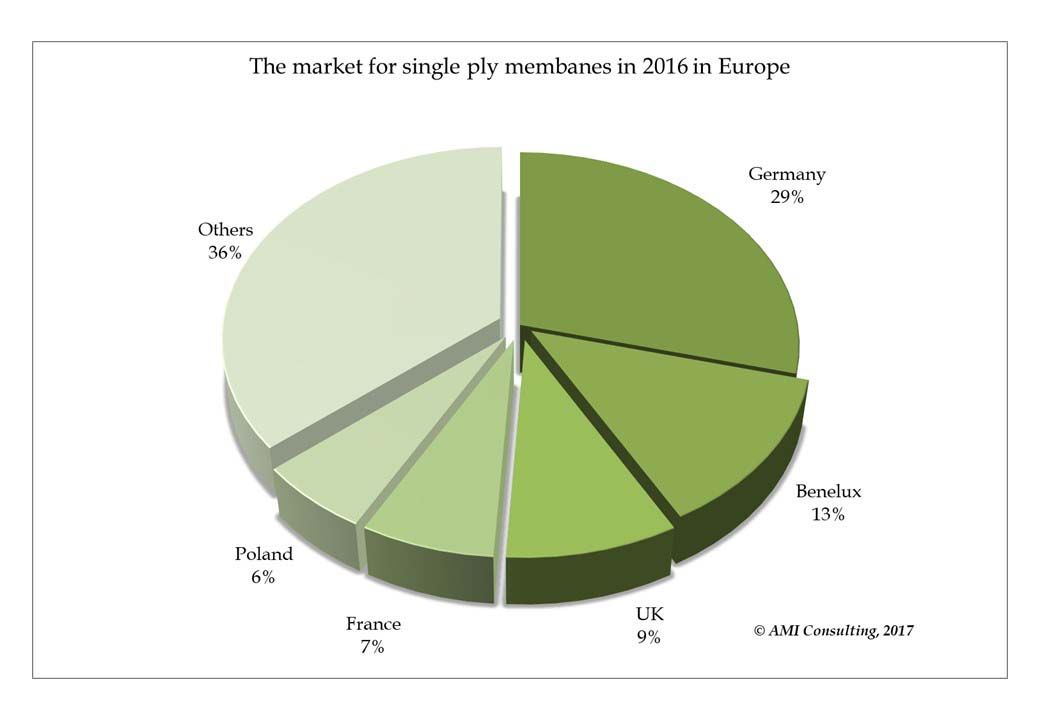 According to a recently published study by Applied Market Information (AMI Consulting), polymer-based single ply membranes are gaining market share from bitumen for waterproofing flat roofs. The report’s editor, John Nash, says that: “Construction activity has strengthened in Europe in the last couple of years and we are now seeing significant growth in demand for single ply. The market is shifting towards lighter weight and faster construction techniques, which benefits single ply at the expense of bitumen felts. In response, several of the single ply producers have increased capacity or are planning to. The impact of single ply’s share gain on the bitumen roofing specialists has been significant and now many of the stronger ones also sell single ply.”
According to a recently published study by Applied Market Information (AMI Consulting), polymer-based single ply membranes are gaining market share from bitumen for waterproofing flat roofs. The report’s editor, John Nash, says that: “Construction activity has strengthened in Europe in the last couple of years and we are now seeing significant growth in demand for single ply. The market is shifting towards lighter weight and faster construction techniques, which benefits single ply at the expense of bitumen felts. In response, several of the single ply producers have increased capacity or are planning to. The impact of single ply’s share gain on the bitumen roofing specialists has been significant and now many of the stronger ones also sell single ply.”
Bitumen prices reportedly fell following the price of oil dropping from €100 per barrel in early 2014 to less than $50 in January 2015. At the same time supply is said to be on a downward trend following the closure of several of Europe’s bitumen producing refineries. Consequentially there has been a reduction in the price of bitumen membrane and a widening of margins but despite this, single ply’s market penetration reportedly continues to grow.
Strong technical innovation in polymeric single ply means better durability, improved aesthetics, easier installation and improved bitumen compatibility. One of the areas in which single ply is making strong progress is in the repair of old bitumen roofs and another is its penetration of single dwelling residential buildings. Not many years ago these applications were almost always waterproofed with bitumen.
Single ply roofing membranes are made mainly from TPOs (flexible compounds based on speciality polyethylene or polypropylene copolymers), EPDM and PVC. The key requirement is 20-25 year performance despite direct exposure to weathering. These are demanding conditions requiring a deep technical commitment by the producers of single ply membranes.



